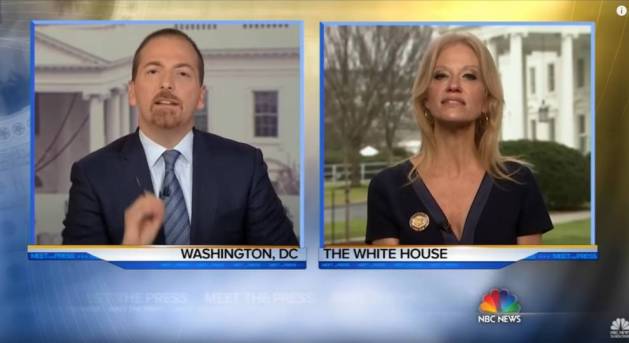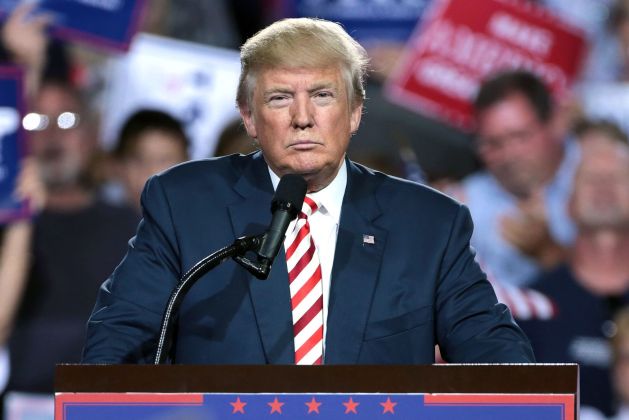
Previously published at WGBHNews.org.
It has not been a good week in the war on disinformation — which is to say that it’s been a week pretty much like all the ones before it.
The first exhibit in our cavalcade of con-artistry comes from New Year’s Day, when a right-wing troll chopped up and re-edited video of Joe Biden to make it look like he was endorsing white nationalism. In fact, the full context of the months-old clip showed he was actually expressing regret for his role in the Clarence Thomas hearings.
Then, on Friday, Iranian Gen. Qassem Soleimani was killed in a U.S. drone strike. And that’s when things really started to get out of hand. Rep. Ilhan Omar, D-Minn., was the victim of a Twitter impersonator who claimed she (that is, the fake Omar) was “ASHAMED … to be called an American” following the assassination. The faux congresswoman added: “THE TIME FOR VIOLENCE IS NOW!”
Rep. Rashida Tlaib, D-Mich., who, like Omar, is Muslim, was attacked by a right-wing talk-radio host who called her a “domestic terrorist” on the basis of a made-up Tlaib quote from a parody account: “Americans have spent decades raping and pillaging my people. What goes around comes around.”
The coup de grotesque came on Monday, when Rep. Paul Gosar, R-Ariz., tweeted out a fake photo of former President Barack Obama shaking hands with Iranian President Hassan Rouhani accompanied by the caption “The world is better off without these guys in power.” When Gosar was confronted over his lie, he offered this imbecilic retort: “no one said this wasn’t photoshopped.”
All of these toxic fakes were quickly debunked, and none made it past the edges of mainstream discourse. But this stuff pollutes our politics anyway. By amplifying the falsehood-filled worldview of President Donald Trump and his supporters (and yes, the overwhelmingly majority of disinformation comes from the right), these lies reinforce the hyperpolarization that is undermining our civic culture.
Can journalism be the antidote to this mess? It hasn’t so far, and that’s not likely to change. On Dec. 29, “Meet the Press” host Chuck Todd devoted the full hour to disinformation and how to fight back.
It wasn’t a bad program; I thought Todd and his guests hit a lot of important points. But over the past few years Todd has become a symbol of mainstream-media impotence in the face of outright lying.
The special program was welcome, but it remains to be seen if anything will change.
Yes, Todd, to his credit, called out White House aide Kellyanne Conway in real time when she spewed her “alternative facts” nonsense during the first few days of the Trump administration. Todd reminded us of that several times during the disinformation special. But all too often, “Meet the Press” has wallowed in business as usual, treating Democrats and Republicans as if it were 1976 and the leading presidential candidates were a couple of decent fellows named Jimmy Carter and Jerry Ford.
New York University journalism professor Jay Rosen, in a blistering blog post, excoriated Todd and his fellow mainstream pundits for fundamentally misunderstanding — make that choosing to misunderstand — the real meaning of Conway’s words. “They agreed to pretend that Conway’s threatening phrase, ‘alternative facts’ was just hyperbole, the kind of inflammatory moment that makes for viral clips and partisan bickering.
“More silly than it was ominous,” Rosen wrote. “In reality she had made a grave announcement. The nature of the Trump government would be propagandistic. And as Garry Kasparov observes for us, ‘The point of modern propaganda isn’t only to misinform or push an agenda. It is to exhaust your critical thinking, to annihilate truth.’”
Todd’s marquee guests Dec. 29 were New York Times executive editor Dean Baquet and Washington Post executive editor Marty Baron. They said all the right things, speaking up for traditional journalistic values such as truth, fairness, independence and empathy.
Baron did not repeat his oft-quoted phrase “We’re not at war with the administration, we’re at work.” But that was the gist of both editors’ messages.
At a time of crisis over the very meaning of truth, they said, journalism’s proper role is to maintain its standards and traditions. It’s frustrating, and it may be insufficient to the moment.
But would it really be better to retaliate against the Trumpists in kind?
Occasional lapses aside, no one can question how tough and enterprising the Post and the Times have been in exposing wrongdoing by Trump, his family and his administration.
There were other good moments as well, including a report on how the right and the Russians inject lies into the mainstream and a smart panel discussion on how the media should respond to disinformation.
One of the participants, Susan Glasser of The New Yorker, explained precisely why Trump and his supporters lie. It’s not to create an alternative narrative. Rather, it’s to destroy the very idea of a narrative.
“Their design, their goal, is to get people to say, ‘I don’t care’ — not even necessarily to say, ‘I believe this lie,’” Glasser said. “Their goal is not necessarily to persuade the unpersuadable, that Ukraine intervened in the 2016 election. Their goal is to get people to say, ‘I don’t know. I can’t figure it out.’”
Strangely, the guests barely scratched the surface of the role played by Facebook and other social media — although tech journalist Kara Swisher did her best, pointing out that algorithms and targeted advertising have led to an ugly nexus of profits, discord and falsehoods.
“They can whisper a thousand different lies in a million different ears,” she said.
Following the program, Alex Howard, director of the Digital Democracy Project, pronounced himself dissatisfied, tweeting, “I don’t think @MeetThePress even came close to grappling with what it means for a POTUS to not only lie but gaslight the public, leading his party towards distrusting the press, intelligence agencies, or scientists, or the risks created should a major war or pandemic break out.”
To me, though, the real issue isn’t whether Todd’s special was good enough. In fact, it was a respectable overview of the disinformation crisis and what journalism can and can’t do about it.
Rather, it’s about whether it will make a difference, starting with “Meet the Press” itself. And, on that front, the early returns are disheartening.
This past Sunday, for instance, Todd’s guest was Secretary of State Mike Pompeo who, like the rest of the administration, has not offered a clear and convincing rationale for Trump’s decision to take out Soleimani and risk war with Iran.
According to Marjorie Arons-Barron, the former editorial director of Boston’s WCVB-TV (Channel 5), the hapless Todd allowed Pompeo to “run roughshod” over him. “Sadly, Todd’s brief Christmas insight appears to have gone the way of New Year’s diet resolutions or Tom Brady’s hopes for another Super Bowl,” Arons-Barron wrote in a blog post.
“We already know the dangers of social media. We should also be aware that broadcast and cable news media coverage of 2020 politics could be even more pernicious. I do miss Tim Russert.”
Leaving aside the question of whether Russert was the gold standard (he was better than what we have today, though he, too, was a sycophant to the powerful), Arons-Barron put her finger on the problem.
Too many in the media class, like Todd, rightly see disinformation as a story to be covered but then fail to connect it to their daily work.
Truth is being undermined right now, in front of us. We need to cover the phenomenon, yes, but we also need to call out manifestations of it when we see it. We have to stop pretending that Trump and his supporters deserve the same presumption of good faith as the politicians of the past — or, frankly, as Democrats, who, for all their faults, are for the most part following the rules as we’ve practiced them for decades.
We are living through a dark period. At some point, we’ll all be called to account. Did we stand up to the malign forces that have taken over much of our government and have excited the forces of hatred and extremism? Or did we let them roll over us in the name of civility, fairness and access?
Talk about this post on Facebook.









